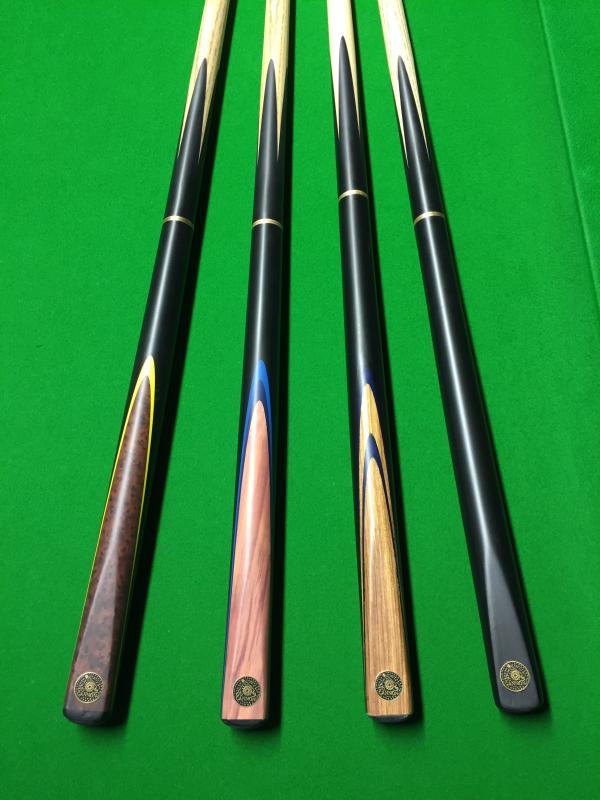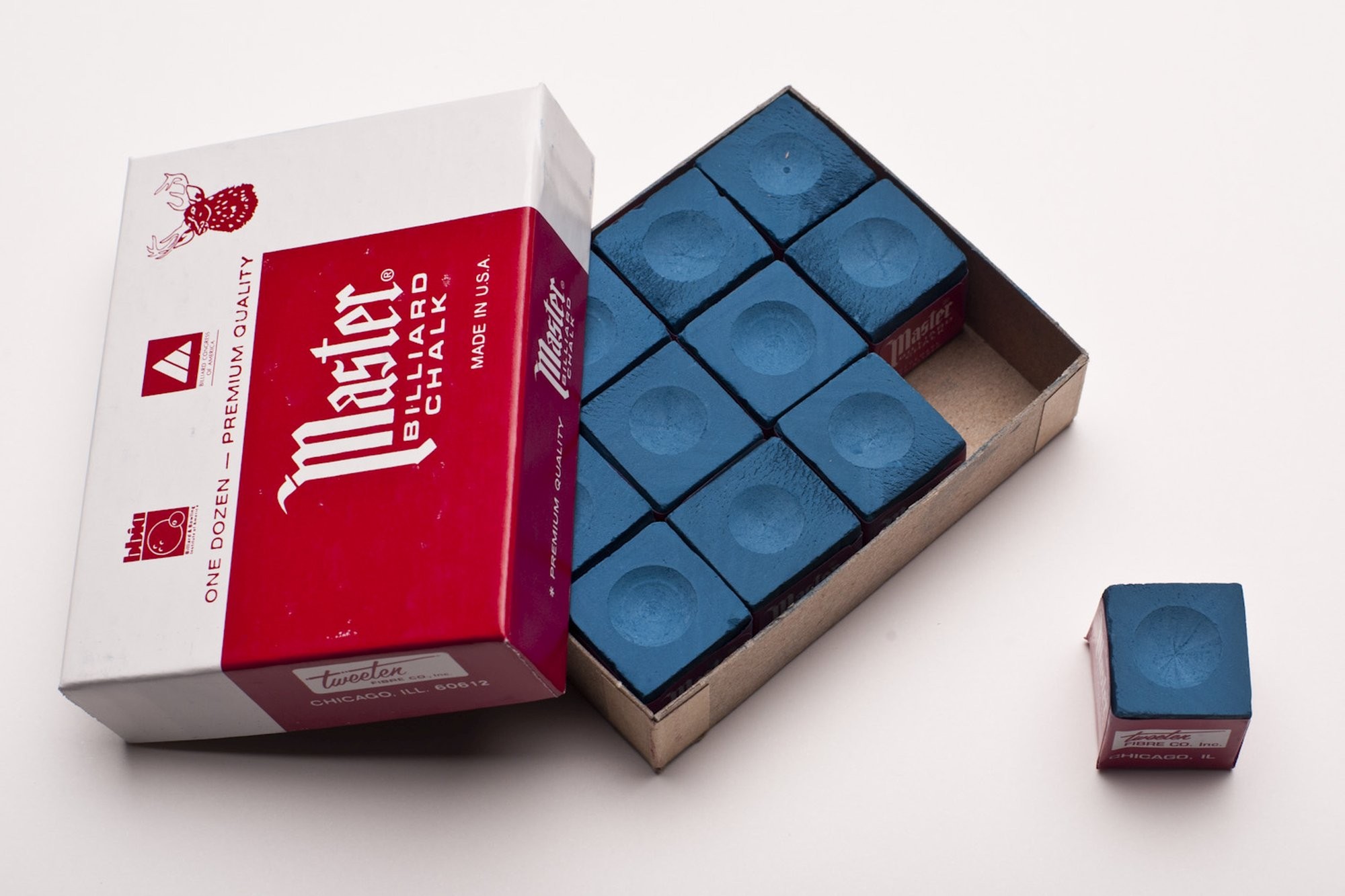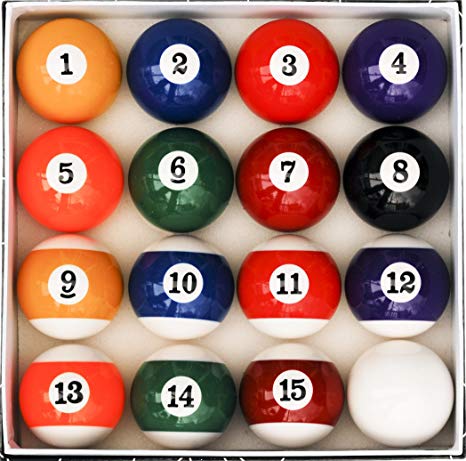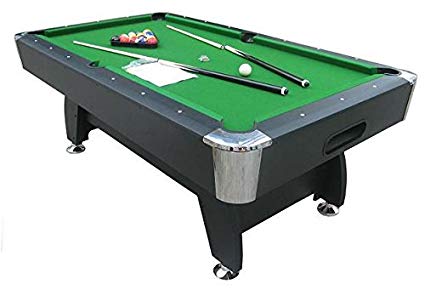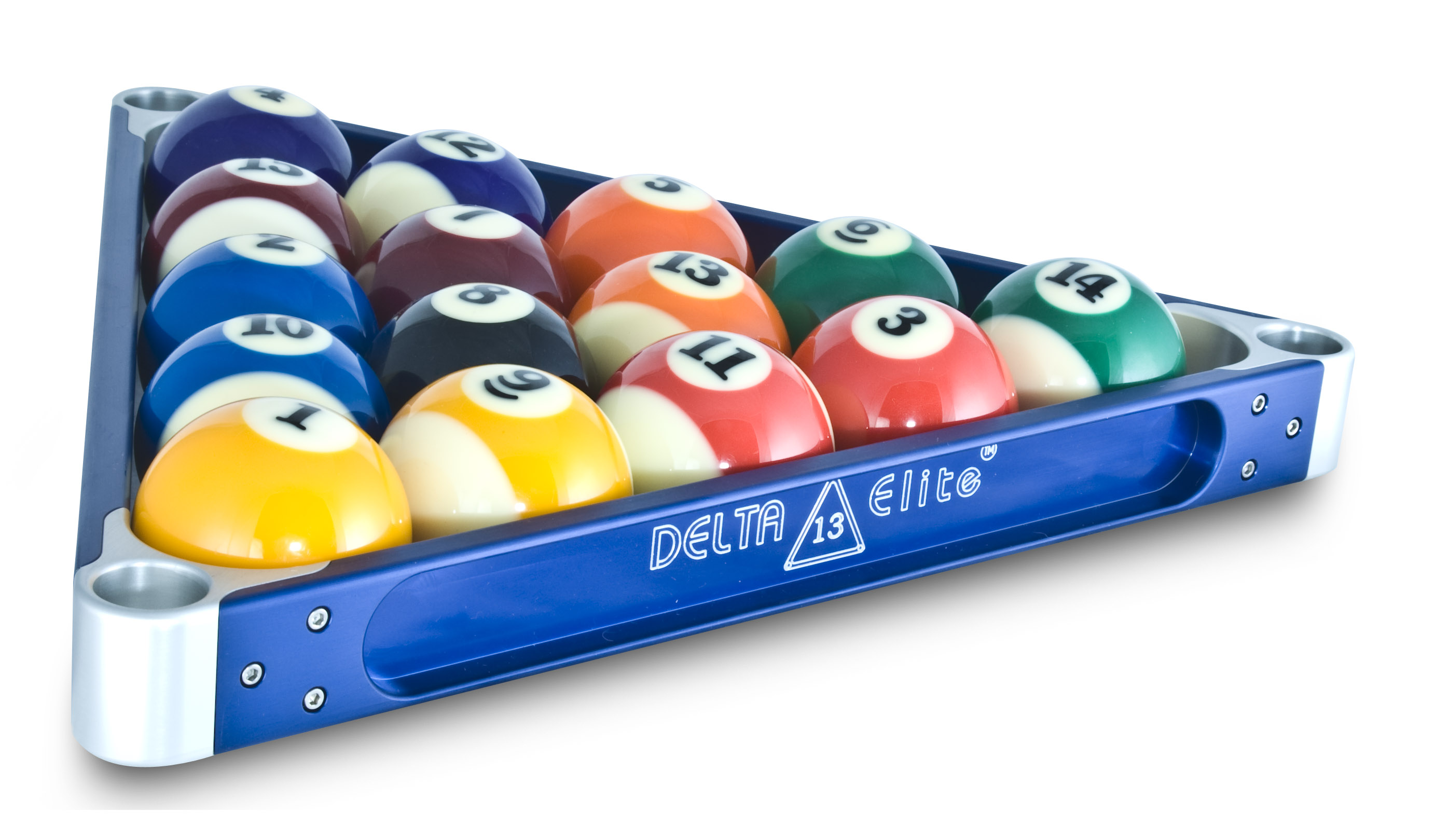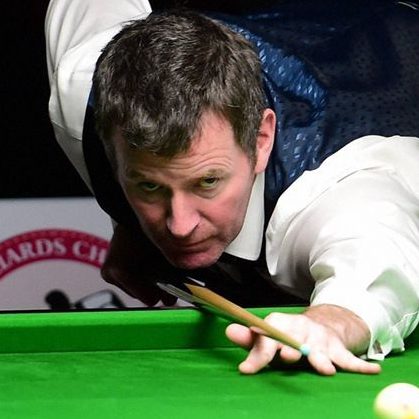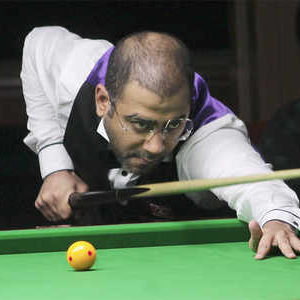English billiards, called simply billiards in the United Kingdom, where it originated, and in many former British colonies such as Australia, is a cue sport that combines the aspects of carom billiards and pocket billiards. Two cue balls (originally both white, with one marked e.g. with a black dot, but more recently one white, one yellow) and a red object ball are used. Each player or team uses a different cue ball. It is played on a billiards table with the same dimensions as a snooker table and points are scored for cannons and pocketing the balls. English billiards has also, but less frequently, been referred to as “the English game”, “the all-in game” and (formerly) “the common game.
English billiards
History
English billiards was originally called the winning and losing carambole game, folding in the names of three predecessor games, the winning game, the losing game and the carambole game (an early form of straight rail), that combined to form it.

Rules
Balls and table
There are three balls. They are the same size as snooker balls (52.5 mm or 2 1⁄16 in with a tolerance of 0.05 mm) and they must weigh the same to a tolerance of 0.5 g within a set.
The balls are designated as:
- Red, an object ball;
- White, the cue ball for player 1, and an object ball for player 2;
- White with a spot, or yellow, cue ball for player 2, and an object ball for player 1.[14]
The billiard table used has the same dimensions as a snooker table, (and in many venues, both games are played on the same equipment). The playing area of a standard tournament table measures 11 feet 8 inches by 5 ft 10 in (3.569 m by 1.778 m) with a tolerance of 1⁄2 inch (1.26 cm) in both directions, though smaller ones, down to half size, are often found in snooker halls, pubs, and home billiard rooms.
Beginning the game
A game in progress, red ball about to be potted.
To see who will be the starting player, both players simultaneously hit a cue ball up the table, bouncing it off the top cushion so that it returns to balk (the first quarter-length of the table). The player who gets his ball closer to the back cushion can now choose which cue ball he wants to use during the game and to break or let the opponent break.
The red ball is placed on the spot at the top of the table (same as the black spot in snooker) and the first player begins by playing in-hand from the “D” behind the backline. The other cue ball remains off the table until the opponent’s first turn, when he plays in hand from the “D”.
The idea is to leave the balls safe by creating either a double balk (both object balls in balk), or the red in balk with the cue-ball tight (frozen) to the top-side cushion.
Scoring
Points are awarded as follows:
- Cannon– striking the cue ball so that it hits, in any order, the other cue ball and the red ball on the same shot: 2 points.
- Winning hazard(or potting, in snooker terms) – striking the red ball with one’s cue ball so that the red enters a pocket: 3 points; or striking the other cue ball with one’s cue ball so that the other cue ball enters a pocket: 2 points.
- Losing hazard(in-off in snooker terms) – striking one’s cue ball so that it hits another ball and then enters a pocket: 3 points if the red ball was hit first; 2 points if the other cue ball was hit first; 2 points if the red and the other cue ball are hit simultaneously.
Combinations of the above may all be scored on the same shot. The most that can be stored in a single shot is therefore 10 – the red and the other cue ball are both potted via a cannon (the red must be struck first), and the cue ball is also potted, making a losing hazard off the red.
Winning is achieved by a player reaching a fixed number of points, determined at the start of the game, e.g. first to 300 points or by a timed game.
Equipments
Billiard balls
Cue balls from (left to right):
- Russian pool and Kaisa—68 mm (2 11⁄16 in)
- Carom—61.5 mm (27⁄16 in)
- American-style pool—57 mm (21⁄4 in)
- British-style pool (largish) —56 mm (2 3⁄16 in)
- Snooker—52.5 mm (21⁄15 in)
- Scaled-down pool—51 mm (2 in) for children’s smaller tables
Not shown: half-scale children’s miniature pool—approximately 28.5 mm (1 1⁄8 in).
Billiard balls vary from game to game, in size, design, and quantity.
Tables
Pool table with equipment.
There are many sizes and styles of pool and billiard tables. Generally, tables are rectangles twice as long as they are wide. Most pool tables are known as 7-, 8-, or 9-footers, referring to the length of the table’s long side. Full-size snooker and English billiard tables are 12 feet (3.7 m) long on the longest side. Pool halls tend to have 9-foot (2.7 m) tables and cater to the serious pool player. Pubs will typically use 7-foot (2.1 m) tables which are often coin-operated. Formerly, 10-foot (3 m) tables were common, but such tables are now considered antique collector’s items; a few, usually from the late 19th century, can be found in pool halls from time to time. Ten-foot tables remain the standard size for carom billiard games. The slates on modern carom tables are usually heated to stave off moisture and provide a consistent playing surface.
The length of the pool table will typically be a function of space, with many homeowners purchasing an 8-foot (2.4 m) table as a compromise. Full-size pool tables are 4.5 by 9 ft (2.7 m) (interior dimensions). High-quality tables have a bed made of thick slate, in three pieces to prevent warping and changes due to temperature and humidity. Smaller bar tables are most commonly made with a single piece of slate. Pocket billiards tables of all types normally have six pockets, three on each side (four corner pockets, and two side or middle pockets).
Cloth
Women playing on an elaborately decorated green-covered table in an early 1880s advertising poster.
All types of tables are covered with billiard cloth (often called “felt”, but actually a woven wool or wool/nylon blend called baize). Cloth has been used to cover billiards tables since the 15th century.
Bar or tavern tables, which get a lot of play, use “slower”, more durable cloth. The cloth used in the upscale pool (and snooker) halls and home billiard rooms is “faster” (i.e., provides less friction, allowing the balls to roll farther across the table bed), and competition-quality pool cloth is made from 100% worsted wool. Snooker cloth traditionally has a nap (consistent fiber directionality) and balls behave differently when rolling against versus along with the nap.
The cloth of the billiard table has traditionally been green, reflecting its origin (originally the grass of ancestral lawn games), and has been so colored since the 16th century, but it is also produced in other colors such as red and blue. The cloth was earlier said to be the most important part of the game, most likely because of the reflection of the game’s origin. The players were determined that the cloth should not be ripped – women were made to continue to use maces after cues were invented, for fear that they would rip the cloth with the sharper cues.
Rack
Aluminum billiard rack that is used for 8-ball, 9-ball, and straight pool.
A rack is the name given to a frame (usually wood, plastic or aluminum) used to organize billiard balls at the beginning of a game. This is traditionally triangular in shape but varies with the type of billiards played. There are two main types of racks; the more common triangular shape which is used for eight-ball and straight pool and the diamond-shaped rack used for nine-ball.
There are several other types of less common rack types that are also used, based on a “template” to hold the billiard balls tightly together. Most commonly it is a thin plastic sheet with diamond-shaped cut-outs that hold the balls that is placed on the table with the balls set on top of the rack. The rack is used to set up the “break” and removed before the “break shot” occurs.
Cues
Billiards games are mostly played with a stick known as a cue. A cue is usually either a one-piece tapered stick or a two-piece stick divided in the middle by a joint of metal or phenolic resin. High-quality cues are generally two pieces and are made of a hardwood, generally maple for billiards and ash for snooker.
The butt end of the cue is of the larger circumference and is intended to be gripped by a player’s hand. The shaft of the cue is of smaller circumference, usually tapering to an 0.4 to 0.55 inches (10 to 14 mm) terminus called a ferrule (usually made of fiberglass or brass in better cues), where a rounded leather tip is affixed, flush with the ferrule, to make final contact with balls. The tip, in conjunction with chalk, can be used to impart spin to the cue ball when it is not hit in its center.
Cheap cues are generally made of pine, low-grade maple (and formerly often of ramin, which is now endangered), or other low-quality wood, with inferior plastic ferrules. A quality cue can be expensive and may be made of exotic woods and other expensive materials which are artfully inlaid in decorative patterns. Many modern cues are also made, like golf clubs, with high-tech materials such as woven graphite. Skilled players may use more than one cue during a game, including a separate generally lighter cue for the opening break shot (because of cue speed gained from a lighter stick) and another, shorter cue with a special tip for jump shots.
Mechanical bridge
The mechanical bridge, sometimes called a “rake”, “crutch”, “bridge stick” or simply “bridge”, and in the UK a “rest”, is used to extend a player’s reach on a shot where the cue ball is too far away for normal hand bridging. It consists of a stick with a grooved metal or plastic head which the cue slides on. Many amateurs refuse to use the mechanical bridge based on the perception that to do so is unmanly. However, many aficionados and most professionals employ the bridge whenever the intended shot so requires.
Some players, especially current or former snooker players, use a screw-on cue butt extension instead of or in addition to the mechanical bridge.
Bridgehead design is varied, and not all designs (especially those with cue shaft-enclosing rings, or wheels on the bottom of the head), are broadly tournament-approved.
In Italy, a longer, thicker cue is typically available for this kind of tricky shot.
For snooker they are normally available in three forms, their use depending on how the player is hampered; the standard rest is a simple cross, the ‘spider’ has a raised arch around 12 cm with three grooves to rest the cue in and for the most awkward of shots, the ‘giraffe’ (or ‘swan’ in England) which has a raised arch much like the ‘spider’ but with a slender arm reaching out around 15 cm with the groove.
Chalk
Billiard chalk is applied to the tip of the cue.
Chalk is applied to the tip of the cue stick, ideally before every shot, to increase the tip’s friction coefficient so that when it impacts the cue ball on a non-center hit, no miscue (unintentional slippage between the cue tip and the struck ball) occurs. Cue tip chalk is not actually the substance typically referred to as “chalk” (generally calcium carbonate), but any of several proprietary compounds, with a silicate base. It was around the time of the Industrial Revolution that newer compounds formed that provided a better grip for the ball. This is when the English began to experiment with side spin or applying curl to the ball. This was shortly introduced to the American players and is how the term “putting English on the ball” came to be. “Chalk” may also refer to a cone of fine, white hand chalk; like talc (talcum powder) it can be used to reduce friction between the cue and bridge hand during shooting, for a smoother stroke. Some brands of hand chalk actually are made of compressed talc. (Tip chalk is not used for this purpose because it is abrasive, hand-staining and difficult to apply.) Many players prefer a slick pool glove over hand chalk or talc because of the messiness of these powders; buildup of particles on the cloth will affect ball behavior and necessitate more-frequent cloth cleaning.
Cue tip chalk (invented in its modern form by straight rail billiard pro William A. Spinks and chemist William Hoskins in 1897) is made by crushing silica and the abrasive substance corundum or aloxite (aluminium oxide),[15][16] into a powder It is combined with dye (originally and most commonly green or blue-green, like traditional billiard cloth, but available today, like the cloth, in many colours) and a binder (glue). Each manufacturer’s brand has different qualities, which can significantly affect play. High humidity can also impair the effectiveness of chalk. Harder, drier compounds are generally considered superior by most players.
Association
WPBSA


